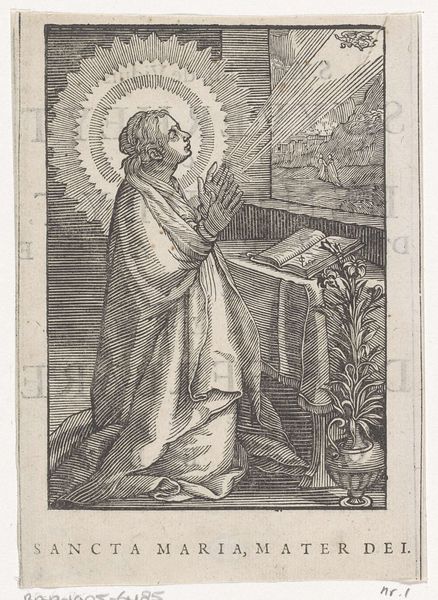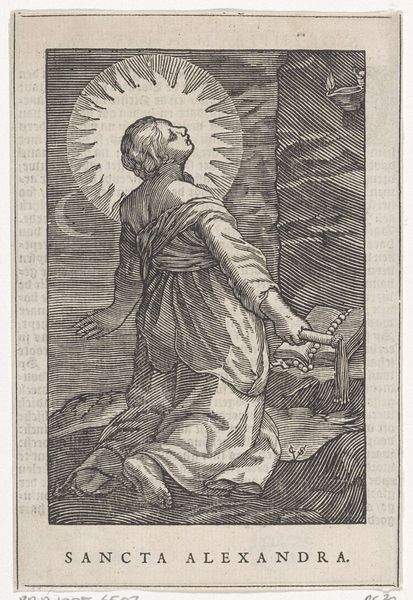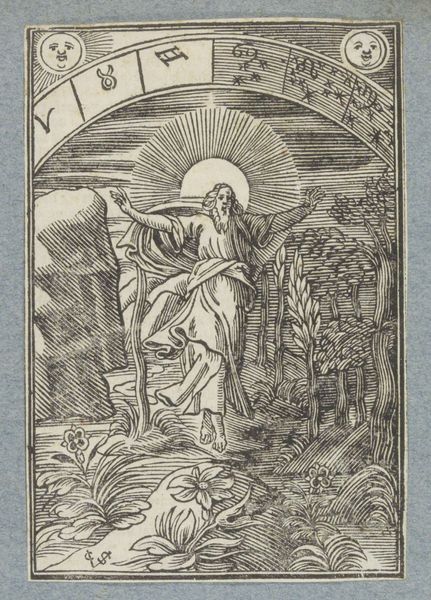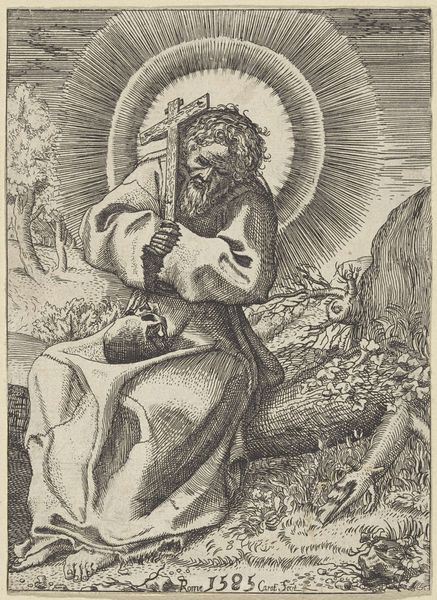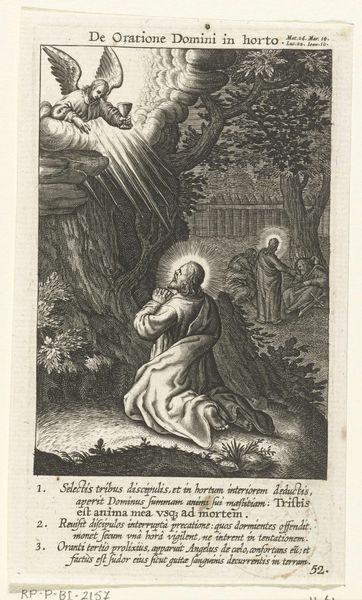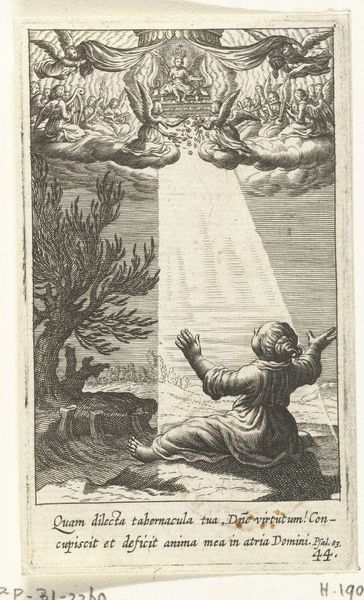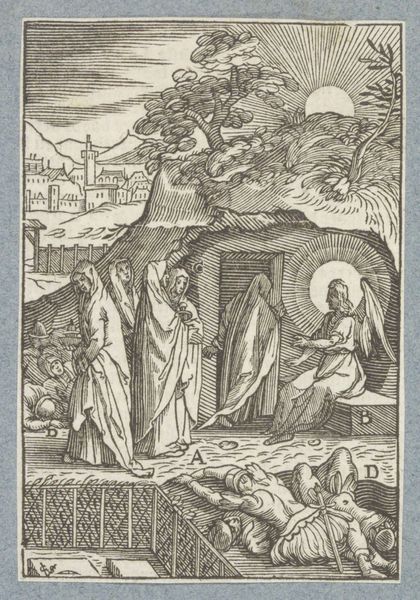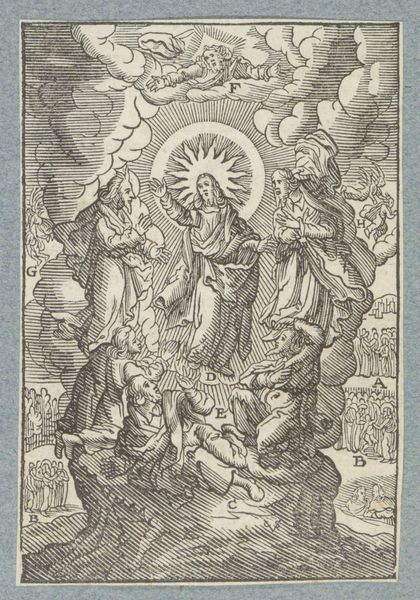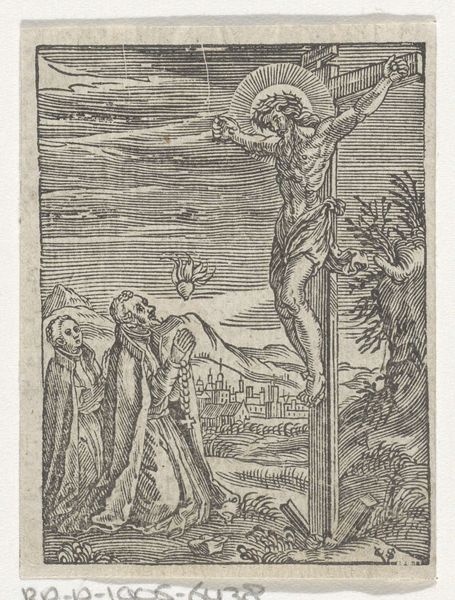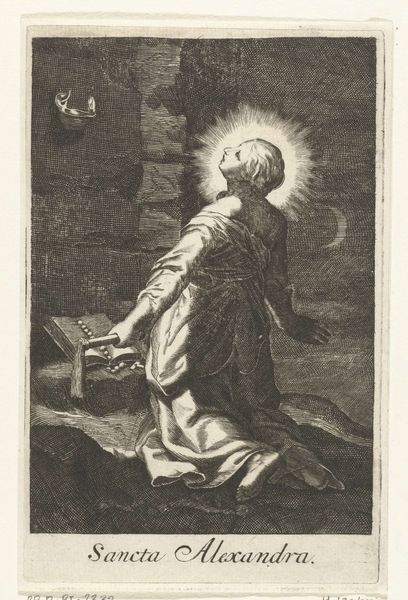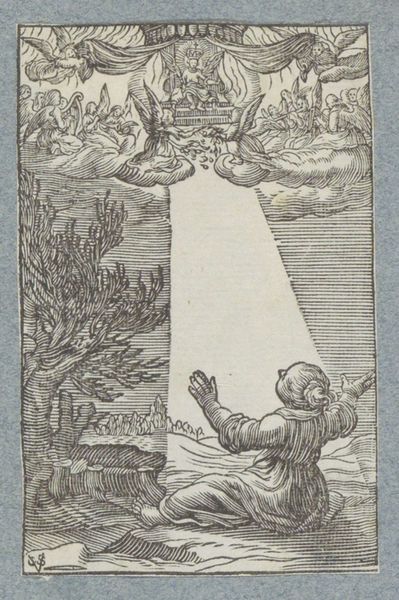
Derde scheppingsdag: schepping van de droge aarde en de planten 1645 - 1646
0:00
0:00
christoffelvaniisichem
Rijksmuseum
print, engraving
#
baroque
# print
#
landscape
#
figuration
#
history-painting
#
engraving
Dimensions: height 112 mm, width 77 mm
Copyright: Rijks Museum: Open Domain
Editor: This is "Derde scheppingsdag: schepping van de droge aarde en de planten," or "The Third Day of Creation: the Creation of Dry Land and Plants," an engraving made between 1645 and 1646 by Christoffel van Sichem the Younger. It’s a detailed black-and-white print, and I'm struck by the graphic contrast between the dark lines and the empty space. What aspects of its structure do you find most compelling? Curator: The strength of this piece resides within its inherent structure, clearly defined through line and form. Note the deliberate layering achieved through the artist's controlled use of cross-hatching. Observe how depth is created, not through color, but through varying densities of lines. Do you notice how the divine figure is not simply represented, but visually constructed through the strategic arrangement of light and shadow? Editor: Yes, it's quite remarkable how much depth he creates with such limited means. It almost feels sculptural. And the figure radiates because of the strategic sun rays and use of empty space. Can you say more about this use of radiance, its symbolism, perhaps? Curator: Symbolism is derivative. What commands our attention here is the formal language: the radial lines emanating from the divine figure function structurally. They provide not just a symbolic aura but, more fundamentally, organize the composition, directing our eye and creating a sense of dynamic movement within the otherwise still scene. The lines activate the scene as well, suggesting growth with those shapes. Editor: I see what you mean. Focusing on the structure emphasizes the artist's choices in conveying that power and divinity, which in turn highlights that relationship within the piece itself, separate from what any single icon represents. It brings another dimension to the piece I had not noticed. Thanks! Curator: Precisely. A close examination of form over content offers a new entrypoint into understanding artistic intent. Analyzing the semiotics enriches our viewing and appreciation.
Comments
No comments
Be the first to comment and join the conversation on the ultimate creative platform.

